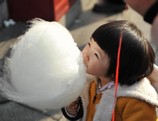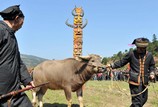
Economists ponder how to ensure safe returns from foreign reserves
A burden or a benefit? That is the question economists were asking over the Spring Festival about China's current high level of US government debt.
The Treasury International Capital report released by the US Department of the Treasury on Feb 15, a week after Chinese New Year's Eve, showed that China remains the largest foreign creditor of the world's largest economy.
Despite the continuous depreciation of the US dollar against the yuan, China bought $19.7 billion of US Treasury bonds in December. In November it bought $200 million. Its total holdings of United State's government debt are now $1.2 trillion, according to the US Treasury Department.
The People's Bank of China, the nation's central bank, said $1 was equal to 6.28 yuan on Feb 18. The exchange rate against the dollar was 6.29 yuan at the end of last year. In other words, fewer yuan are needed to buy a dollar. In 2012, the yuan rose 0.25 percent against the dollar.
US Treasury bonds accounted for 36.4 percent of China's $3.31 trillion foreign exchange reserves on Dec 31, $130 billion up from a year earlier, according to data from the central bank on Jan 10.
China's investment amount in US government debt was $1.15 trillion at the end of 2011, 36.2 percent of the total foreign exchange reserves of $3.18 trillion, the PBOC reported.
Together with other dollar-denominated investment products, such as certain corporate bonds, the proportion of US dollar debt is almost 70 percent of China's entire foreign exchange reserves.
A heated discussion developed among senior economists and scholars on Sina Weibo, a Twitter-like Chinese Internet platform, while most Chinese people were busy sharing family photos and feasting during the year's most important festival.

















 Cosplay enthusiasts perform at Shanghai comic convention
Cosplay enthusiasts perform at Shanghai comic convention


![]()
